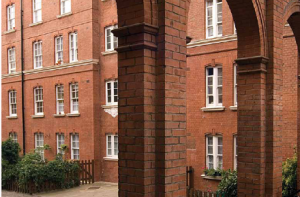New fire safety guidance for blocks of flats has been launched to help keep residents safe.
Despite nearly a quarter of all housing fire deaths in England taking place in apartments, until now there has been no comprehensive document on how to best manage risks in such buildings.
 |
| [relatedPosts title=”Related Posts”] |
|
|
The Local Government Group was commissioned to put together the specialist advice which will be used by social and private landlords, risk assessors, fire officers and others in the housing sector.
Fire Safety Guidance for Purpose Built Blocks of Flats, now available for free download, will run alongside existing advice on housing. It deals with topics ranging from escape routes, door insulation and sprinklers, to firefighter access, the needs of older and disabled people, and combating vandals and arsonists. As well as general apartment complexes, it also covers flats in sheltered housing schemes and accommodation for students or workers.
The document was created following concerns from landlords and risk assessors that existing fire regulations didn’t adequately cover blocks of flats. The LG Group worked alongside councils, landlords, management agents, housing and environmental health professionals and fire authorities during the five-month project.
Cllr David Parsons, Chairman of the Local Government Group’s Environment and Housing Programme Board, said:
“Clear and comprehensive fire safety guidance can mean the difference between life and death. This innovative project brought together all aspects of the housing world to share experience and expertise and has resulted in common sense advice. This will be of great use to landlords and fire officers, helping to keep people as safe as possible and protect property.
“The existing guidance covers most types of property very well, but it was never meant for blocks of flats and it became apparent some landlords were unsure of their legal responsibilities in such buildings. This was compounded by fire risk assessors being unclear about the level of investigation required when carrying out risk assessments.
“These extra guidelines should resolve these issues and help make sure everyone involved in the housing sector knows exactly what they have to do so lives aren’t needlessly put at risk.”
Recommendations include:
- Vigilance against people smoking in communal areas and providing cigarette receptacles by entrances
- Effective locks on doors and windows, CCTV systems and, where appropriate, caretaker/concierge presence to protect against vandals and arsonists
- Ensuring escape routes and exits are well signed and lit, clear of clutter and have as few ‘dead ends’ as possible
- Monitoring modifications of flats by tenants which may affect fire safety
- Promoting the ‘stay put’ principal where appropriate for residents whose flat is not on fire, rather than instigating a full evacuation of the building
- Regular inspection of electrics, heating, ventilation and lightening protection systems
- Making sure firefighters have easy access to buildings and internal firefighting equipment
Nick Gracie-Langrick, Chair of the Guidance Reference Group and Home Improvement Agency Manager at Wandsworth Council, said:
“After a few months of hard work from sector fire safety experts, the guidance is ready for release. I am confident that this will provide the stimulus for all parties to tackle the concern that is fire safety in blocks of flats.
“Landlords and enforcement bodies will benefit from the comprehensive guidance that will support parties through the risk assessment process, from appointing a fire risk assessor to implementing its findings. I certainly hope that organisations will look to use the guidance with immediate effect, with landlords and enforcement bodies working positively to increase the safety of residents of blocks of flats.”
Noel Brosnan, Director of Asset Management, Octavia Housing and National Housing Federation, said:
“I found the guide really helpful, it has at long last introduced a bit of common sense. The key theme for me is that it encourages property managers, fire advisors and enforcement agencies to be proportionate to the risk.
“Proposing expensive alterations to bring all buildings up to modern standards is usually not reasonably practicable.”
Fire safety guidance for purpose-built blocks of flats (PDF, 192 pages, 3MB large file)




